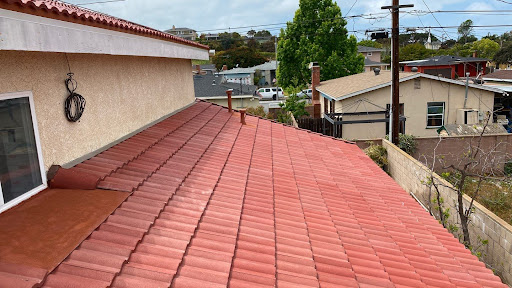
The tile roofing found in California is known for capturing the look of the Southwest and Mediterranean climates. While tile roofs work well just about anywhere and can be made to match virtually any home, they are popular in our area.
There are several reasons why roof tiles are popular, chiefly their durability, which gives tremendous strength to their iconic look. How long do tile roofs last in California? The answer is an astounding 50-100 years when properly maintained. Compare that with asphalt shingles, which tend to last 20-30 years.
California Roof Tiles
You can install tile roofing almost anywhere in the United States and get long-lasting roof results. Fortunately for California homeowners, roof tiles are particularly well-suited to the area. Roof tiles stand up to the salt and humidity of coastal regions and can handle the harsh sun. Roof tiles are also impervious to fire, which is crucial for homeowners in California.
How Long Do Different Types of Tile Roofing Last?
The most common types of roof tiles are clay or concrete. Both come in various shapes and styles and can match virtually any architectural design. While roof tiles tend to conjure a southwestern or Mediterranean image, they can be made to look like wood to match the Craftsman style, log homes, and many other designs.
For those looking for higher-end roof tiles, slate can be an option. Slate costs much more than any other type of roofing but lasts up to 150 years. Meanwhile, clay tiles can last over 100 years, and concrete over 50 years when properly maintained.
Regular Maintenance and a Tile Reset
The key to tile roof longevity is maintenance, particularly replacing broken tiles and the underlayment, which does not last as long as the tiles themselves. The underlayment is the material below the tiles that provide the additional waterproofing a roof needs. It can last over 30 years when two layers of quality underlayment are used.
To get the most out of a tile roof, experts can pull the roof tiles, replace the underlayment, and then relay the tiles for added roof life and performance. This service is called a tile reset.
Saving with a Tile Roof
First, there’s the matter of durability. Tile roofs can be more expensive to install than other types of roofing, like asphalt shingles, but homeowners save with tile roofs over time. A home with asphalt roofing will likely need a new roof every 20-30 years. That means up to five new roofs for that home compared to just one clay roof in the same timespan.
Tile roofs excel at reflecting the sun’s heat. That can mean reduced power bills in the summer. During cooler months, tile roofs help keep heat in the house, so heating bills can benefit.
Should You Seal Your Tile Roof?
A tile roof does not need to be sealed. The tiles themselves keep moisture out when properly installed with an underlayment below. However, annual maintenance is recommended. Experts will inspect the roof for broken tiles and look for roof damage in areas like roof valleys, which can be addressed. If roof valleys regularly accumulate debris, experts can cut back the tile and install a channel to allow water to run off more effectively.
How Often Should a Tile Roof Be Cleaned?
Tile roofs are relatively low maintenance. They also look great without having to be cleaned often. When installed properly, the tiles can withstand harsh climate conditions like relentless sun and heat, hail, and even debris from high winds.
The primary reason for a tile roof needing to be cleaned involves the accumulation of debris like leaves on the roof. These buildups should be cleaned regularly and not left sitting on the roof for long. How often a roof needs cleaning is determined by how much debris tends to fall and settle on the roof. This can range from every few weeks to every couple years, though once per year is typical.
Other types of roof cleaning can be for aesthetic reasons. For example, a northern-facing roof that receives less direct sunlight can see algae accumulation. This will not likely damage the tiles, but they can be cleaned to remove the unwanted look of algae. This is typically done with a gentle chemical approved for tiles. Tile roof cleaning should be done by a professional due to the potential danger of cleaning in high sloped areas.
Clay vs. Concrete Tile Roofing
What type of roof tile is best for your home? That depends on several factors. Clay and concrete tiles are both made with molds, so you can choose from many options to find the right tile roof for your home. The aesthetic appeal of each will often determine the choice.
The most important factors when choosing clay or concrete tiles for your roof are price and durability. Clay roofing will cost more than concrete for installation. However, newer clay tiles tend to break more easily when walked on than thicker concrete tiles. Only experienced roofers should walk on a tile roof.
On the other hand, roofs that cannot accommodate heavier concrete tiles will require either thinner concrete or clay tiles. You can expect a tile roof to last around 50 to 100 years, so you are getting a long-lasting roof either way.
Regular maintenance is the key to a lasting roof. No matter which type of tile you choose, broken tiles should always be replaced as soon as possible. The underlay will help keep moisture out even when a tile is broken, but it will deteriorate quickly when left exposed.
Find Your Roofing Solutions with Roof Repair Specialist
No matter what type of roofing you have on your home, you can get the roofing service you need in California from our team of qualified roofing professionals.




